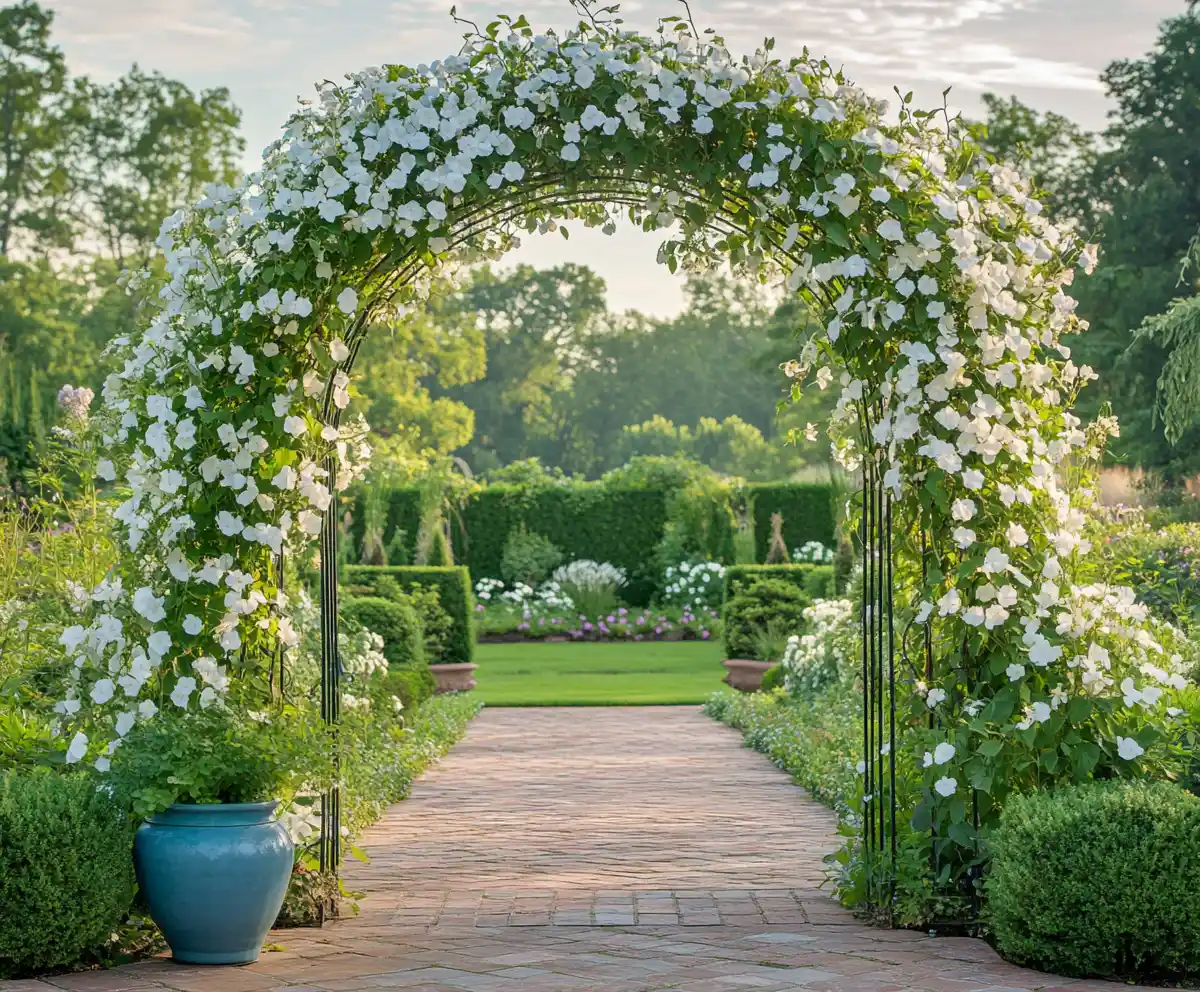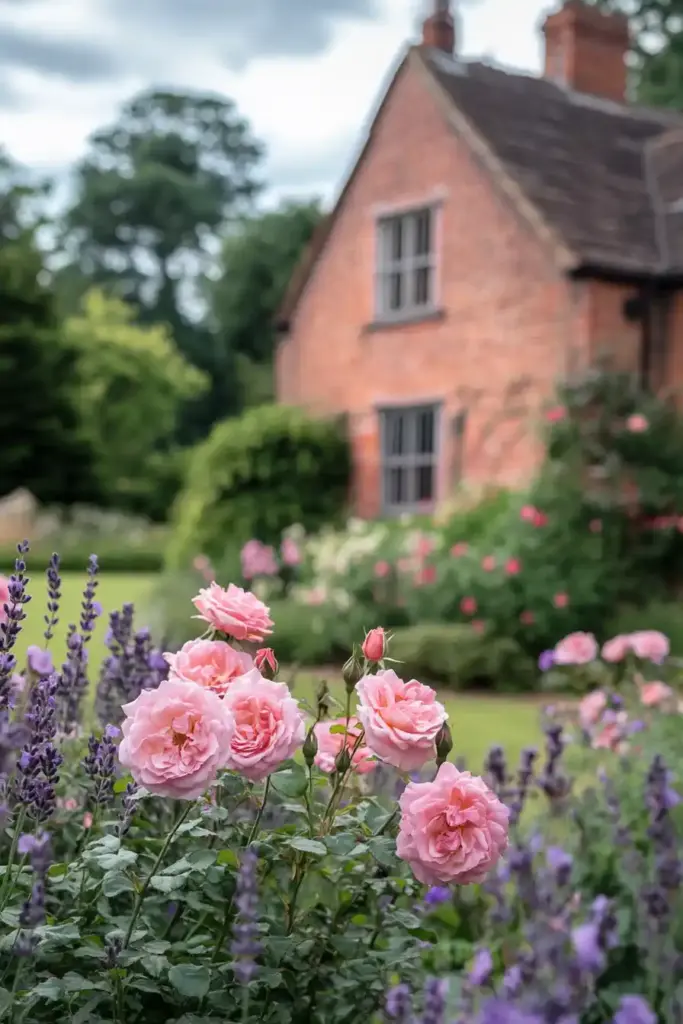There’s something undeniably magical about rose garden ideas — these timeless flowers have been enchanting gardeners for centuries with their vibrant colors, captivating fragrances, and graceful forms. Whether you’re designing a classic formal garden or a relaxed backyard haven, roses bring unmatched beauty and versatility to your outdoor space.
Today’s best rose garden designs aren’t just about neat rows of blooms; they blend lush roses with perennials and native plants to create landscapes that not only delight the senses but also invite beneficial wildlife. From charming ramblers to colorful ground covers, let’s explore some stunning ways to make your garden burst with roses.
1. Hedges or Mass Plantings
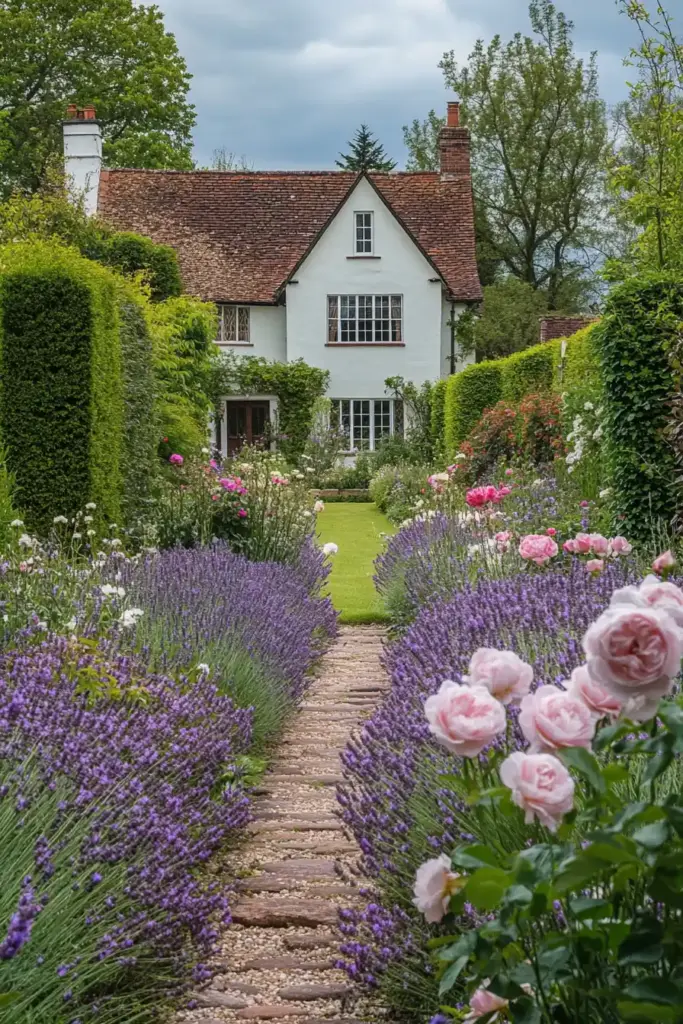
If you’re looking to make a bold visual statement, consider planting roses in structured blocks or hedges. Shrub roses like the Knock Out series are ideal for this purpose. Their reliable blooms and bushy growth habit create a striking presence, especially when grouped in threes or fives for a natural look.
- Perfect for contemporary gardens with clean lines and minimalist color schemes.
- Offers seasonal interest from spring to fall.
- Requires minimal pruning and thrives in full sun.
Tip: Combine with evergreen hedging or ornamental grasses for texture and year-round structure.
2. Wildlife-Friendly Roses
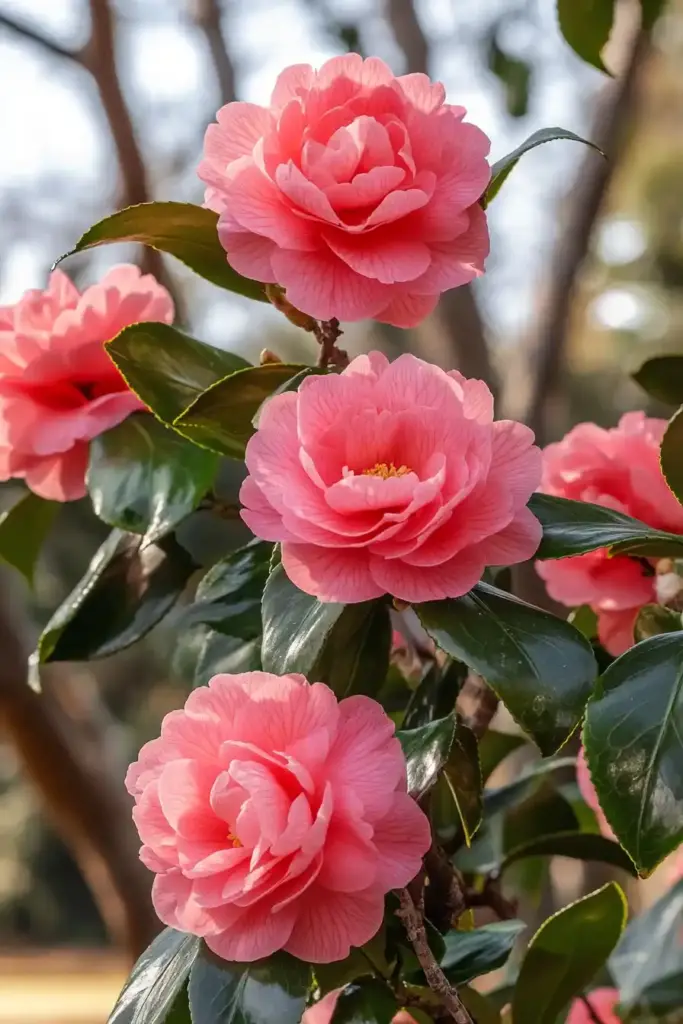
Gardeners looking to support pollinators and birds should lean into native or wild rose varieties. Species like Rosa carolina or Rosa rugosa produce open flowers rich in pollen and hips that feed birds in winter.
- Use them in naturalistic borders or informal hedges.
- Their resistance to pests makes them a low-maintenance choice.
- Supports a biodiverse garden ecosystem.
Pair with: Echinacea, salvia, or ornamental grasses to enhance the habitat-friendly vibe.
3. Grow Roses Through Trees
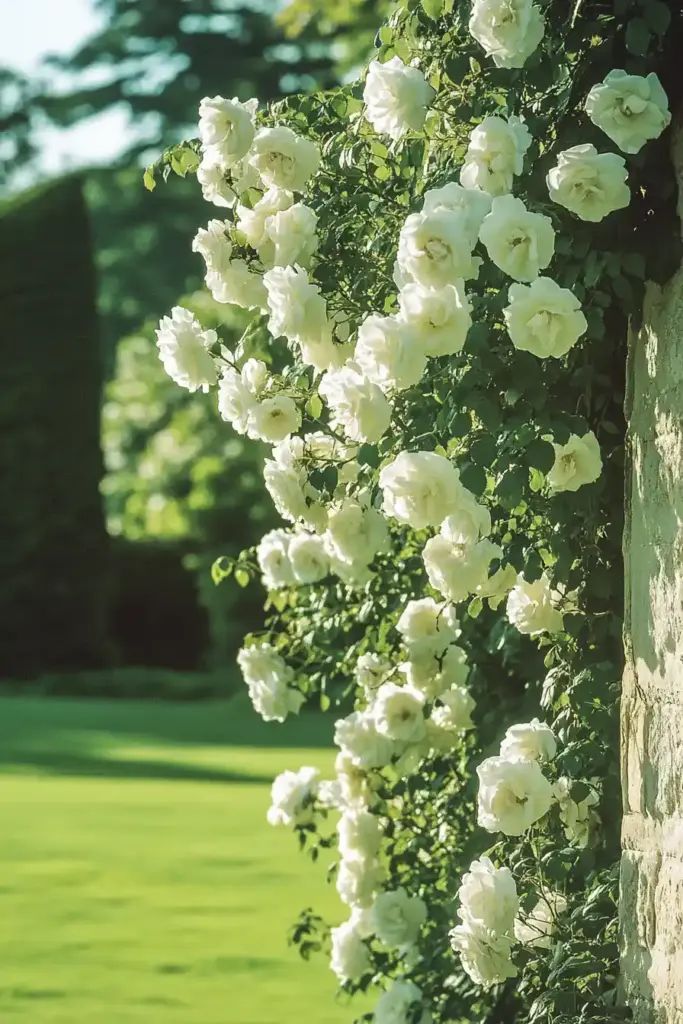
Want to add vertical flair without installing new structures? Try training rambling roses through small trees. Varieties like Francis E. Lester gracefully wind their way up branches, offering clouds of delicate blooms without smothering the host tree.
- Ideal for cottage gardens or woodland-edge plantings.
- Minimal pruning — just occasional guidance as they climb.
- Looks stunning in spring and early summer.
Pro Tip: Choose trees with light, open canopies like hawthorn or crabapple.
4. Roses as Ground Cover
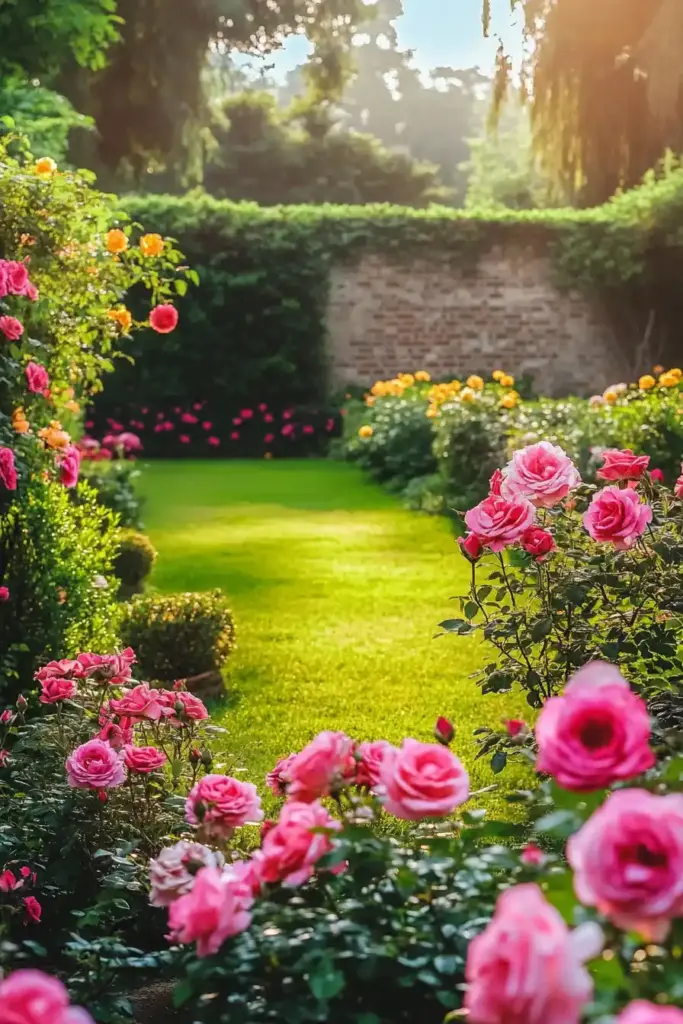
Don’t overlook the ground-level magic of roses. The Flower Carpet series is bred to spread low and wide, blanketing beds and borders with colorful, dense blooms that also help suppress weeds.
- Excellent for sloped areas, front-of-border planting, or large open beds.
- Pairs beautifully with low-growing companions like catmint (Nepeta) or creeping thyme.
- Drought-tolerant once established.
Bonus: Their self-cleaning blooms reduce the need for deadheading.
5. Over Seating Areas
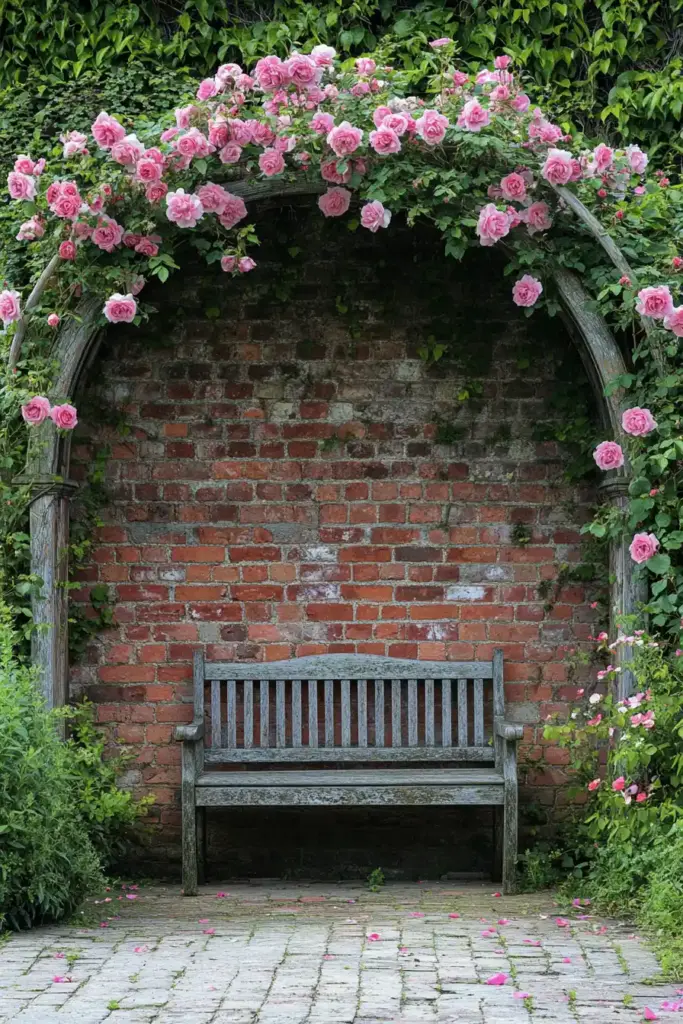
Few things feel more romantic than relaxing beneath a canopy of roses. Training ramblers like Phyllis Bide over benches, pergolas, or arches creates a dreamy shaded retreat filled with soft color and fragrance.
- Use strong, weatherproof supports for climbing varieties.
- Choose repeat-flowering ramblers for blooms throughout the season.
- Creates dappled shade that softens sunlight in summer.
Design Tip: Add gravel paths or rustic paving beneath for a classic, timeless garden nook.
6. Informal Mixed Borders
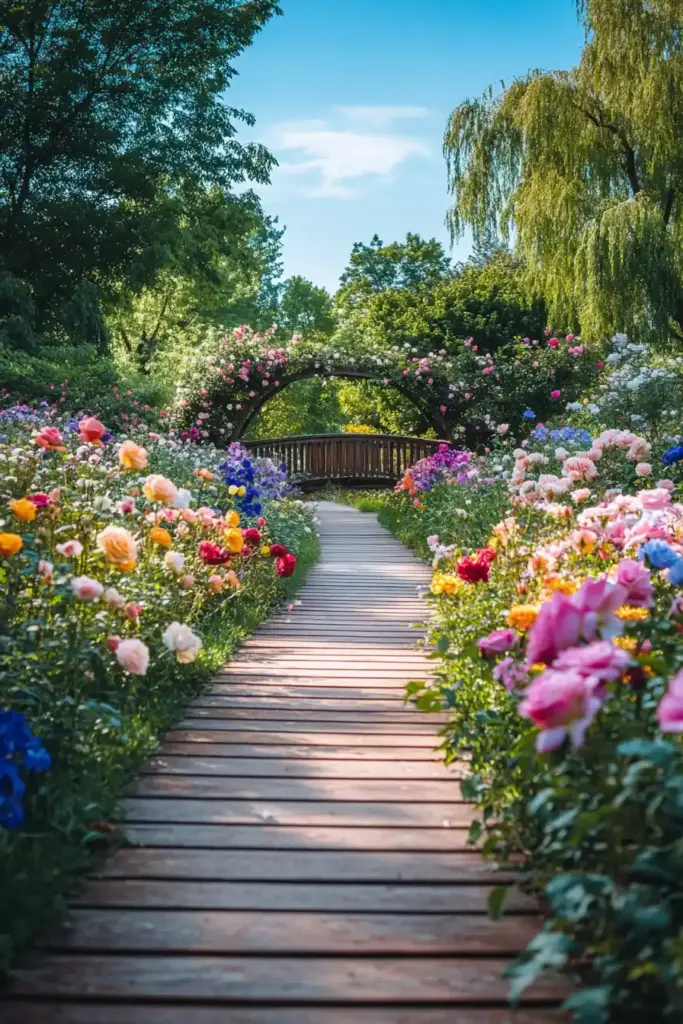
For a relaxed, cottage-garden vibe, mix shrub roses with a tapestry of perennials. Combine textures, heights, and colors for an ever-changing display. Favorites like yarrow, salvia, and sea holly contrast beautifully with lush rose blooms.
- Adds movement and softness to traditional rose beds.
- Attracts bees, butterflies, and other beneficial insects.
- Works well in full sun with well-drained soil.
Layering Idea: Place taller perennials in the back, medium roses in the middle, and low-growing fillers like lady’s mantle at the edge.
7. Color Block Planting
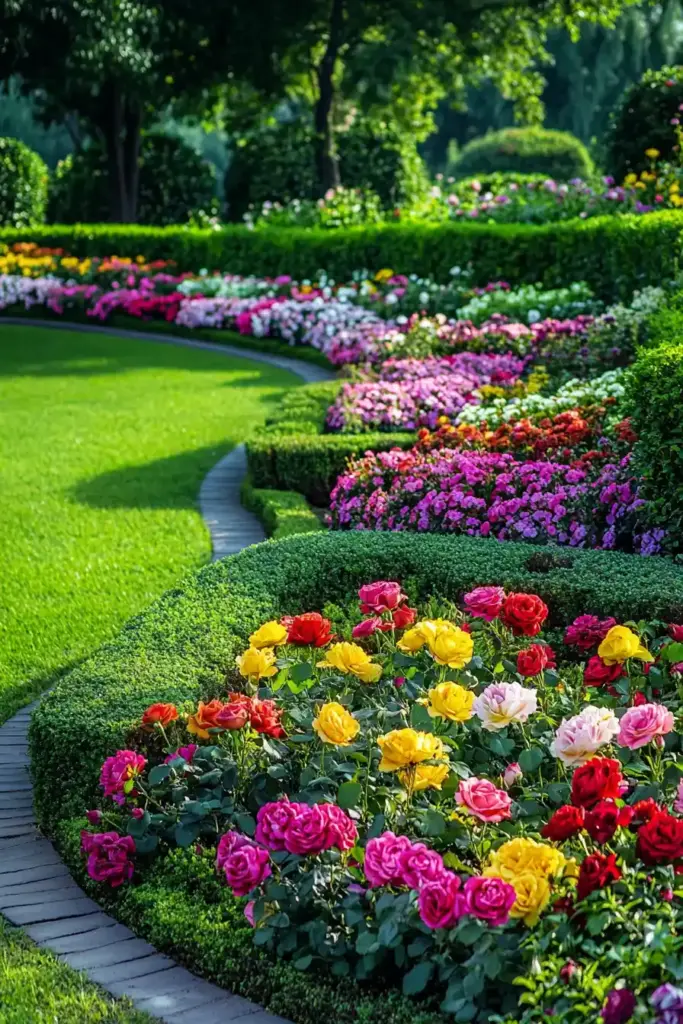
Mass planting a single rose variety in groups of three, five, or seven creates a powerful, color-driven design. This method is often used in formal gardens like RHS Rosemoor, where each block becomes a distinct visual feature.
- Best for large garden beds or symmetrical layouts.
- Helps define areas with bold splashes of color.
- Easier to manage since all plants have similar care needs.
Great Choices: Try Queen of Sweden, Munstead Wood, or Desdemona for consistent bloom and striking color.
8. Pathways with Rose Arches
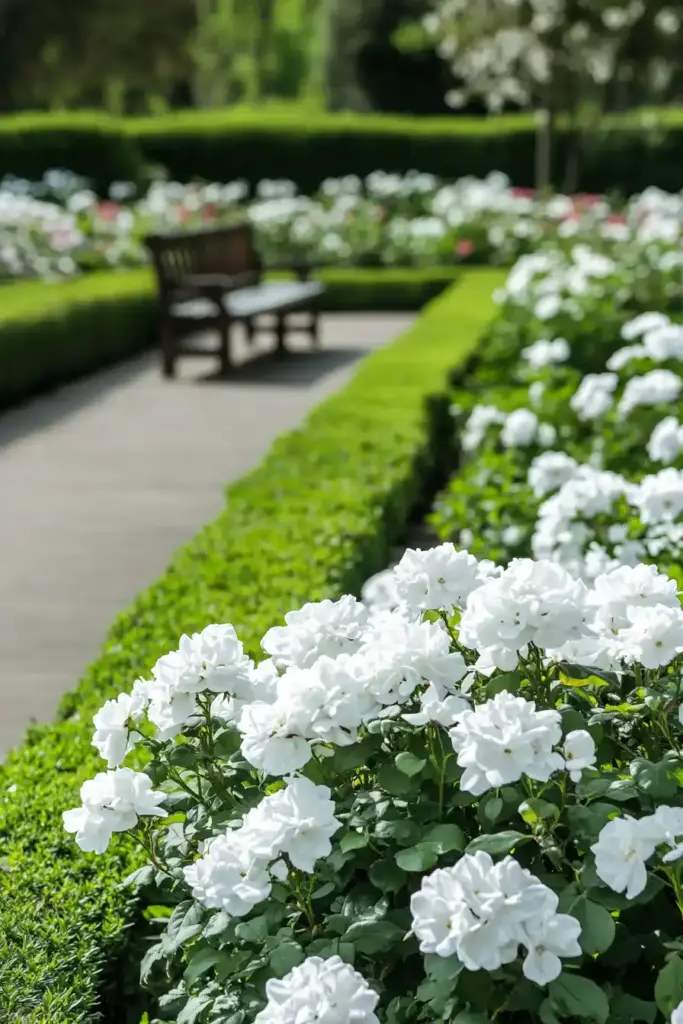
Enhance garden walkways with climbing roses trained over arches. Varieties like Adelaide d’Orleans produce cascades of blooms that turn paths into enchanted tunnels.
- A great way to define entryways or transitions between garden areas.
- Fragrant blooms add a sensory experience as you pass through.
- Pairs well with wisteria or clematis for layered bloom times.
Maintenance Tip: Regular tie-ins and pruning help keep the arch shape neat and floriferous.
9. Lavender & Roses
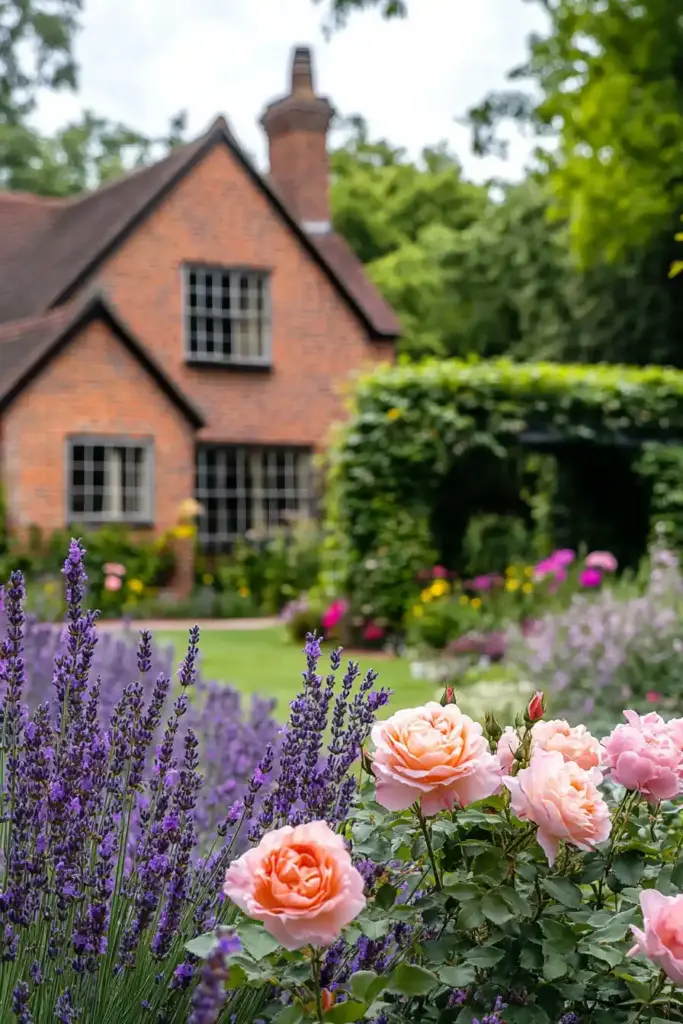
There’s a reason why lavender and roses are a classic English garden pairing. The soft, silvery foliage and violet spikes of English lavender contrast beautifully with the rounded blooms of roses like Boscobel, offering both visual and aromatic appeal.
- Lavender helps deter pests, benefiting nearby roses.
- Thrives in similar conditions: full sun and well-drained soil.
- The cool tones of lavender offset warmer rose hues for stunning color harmony.
Planting Tip: Create a border with alternating clumps of lavender and rose bushes for a rhythmic, natural feel.
10. Soften Walls & Structures

Climbing roses are the perfect way to blur harsh lines and add softness to garden walls, fences, sheds, or even old outbuildings. Varieties like Phyllis Bide or Climbing Iceberg work wonders at creating vertical interest.
- Provides color at eye level and beyond.
- Encourages nesting birds and pollinators when grown organically.
- Can be combined with clematis for a two-tone vertical display.
Best Practice: Use trellises or wire supports to gently guide canes and prevent damage to walls.
11. Around Doorways
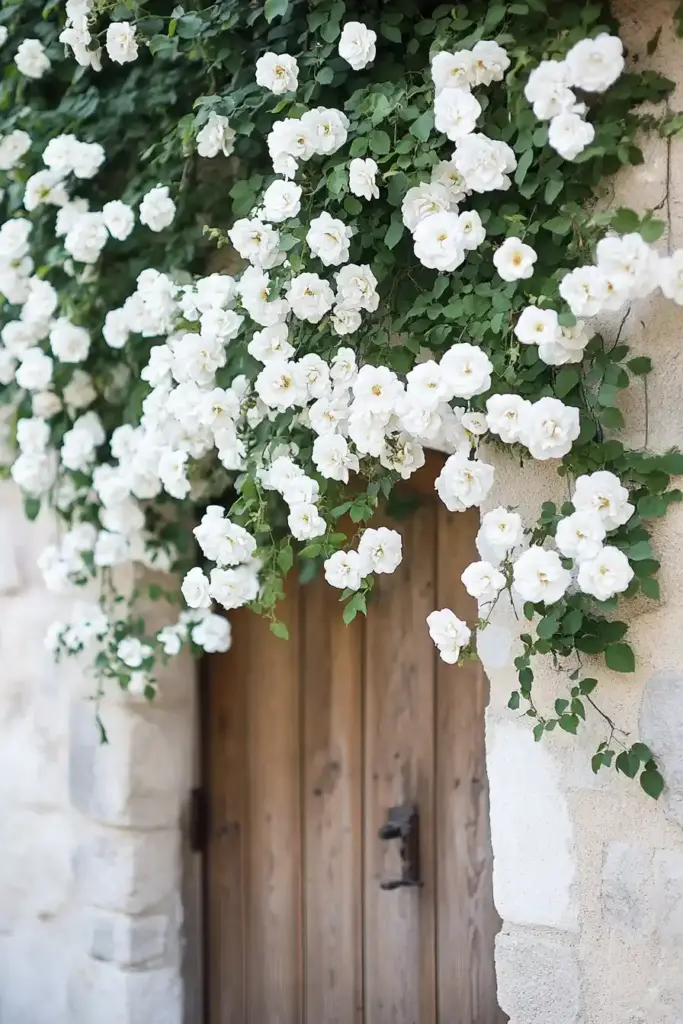
Welcome guests with a fragrant floral frame by growing roses around entrances. Thornless or nearly thornless varieties like Mortimer Sackler are ideal for doorways where close contact is frequent.
- Adds instant curb appeal and charm to any entry.
- Ideal for narrow planting spaces or containers.
- Pairs beautifully with clipped boxwood or containers of herbs.
Design Tip: Use an arch or decorative iron trellis to support climbing roses around a front door or garden gate.
12. Potted Roses for Patios
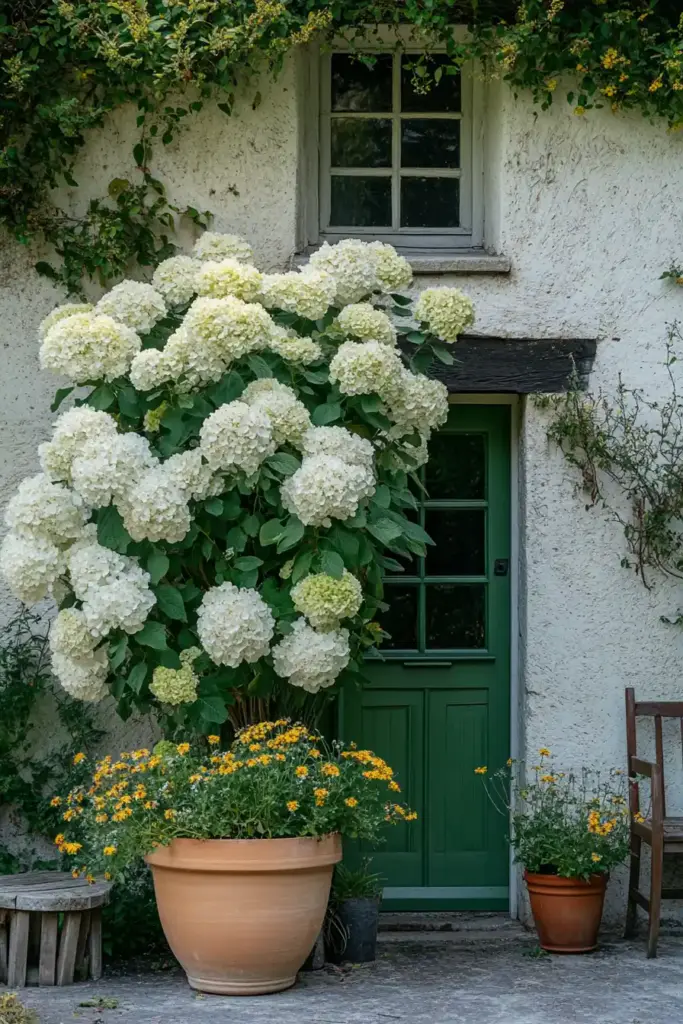
Short on space? Container gardening with roses offers big beauty in small areas. Compact, repeat-flowering varieties like Harlow Carr, Desdemona, and Vanessa Bell thrive in pots on patios, balconies, or rooftop gardens.
- Great for renters or small-space gardeners.
- Easy to move and rearrange as needed.
- Pairs well with trailing plants like bacopa or ivy.
Container Care: Use large, deep pots with good drainage and feed regularly for continuous bloom.
13. Climbing Roses on Obelisks
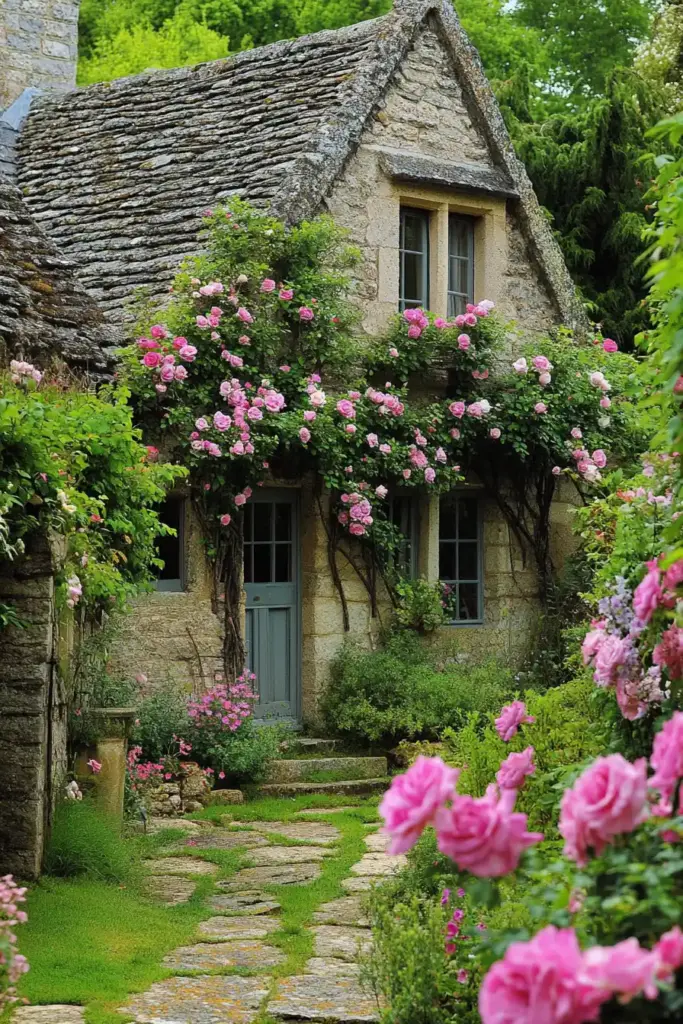
Add height and drama to borders with freestanding obelisks or towers wrapped in climbing roses. Varieties like Gertrude Jekyll are fragrant, robust climbers that create an instant focal point.
- Perfect for anchoring flower beds or marking garden transitions.
- Easy to install and move if redesigning your space.
- Encourages upward growth without taking up much ground area.
Design Idea: Place an obelisk at the center of a circular bed or flanking a pathway for symmetry and structure.
14. Focal Point Pergolas
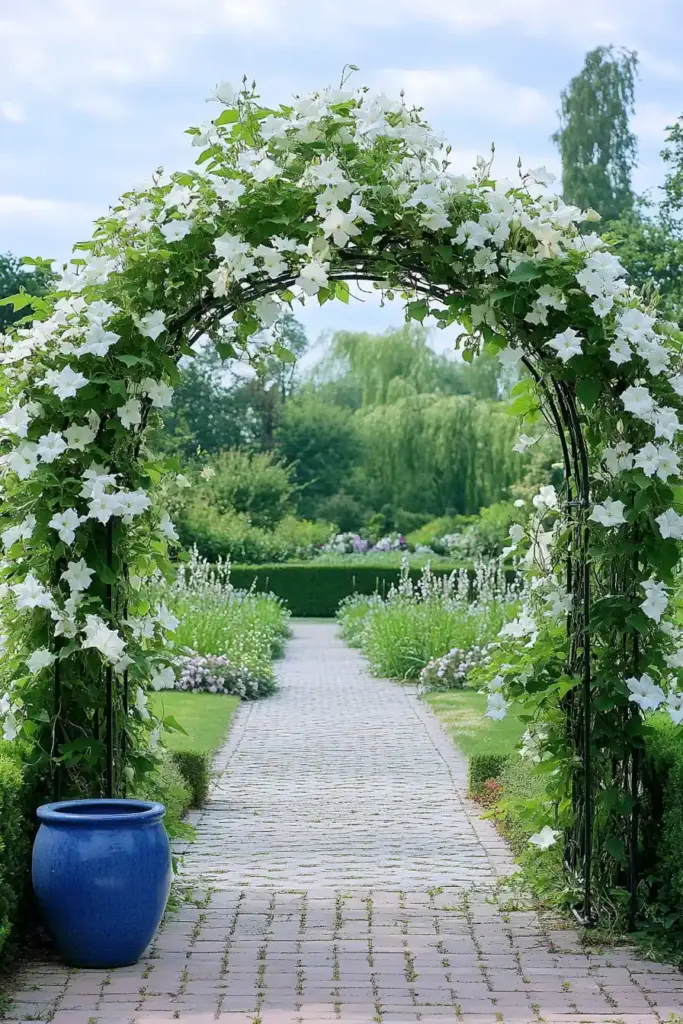
Turn your pergola into a showstopper by training vigorous ramblers like Rosa mulliganii across the top. Their cascading blooms create a ceiling of petals that’s both stunning and shaded — perfect for outdoor dining or a peaceful reading nook.
- Best suited for sturdy wooden or metal pergolas.
- Offers summer-long fragrance and visual interest.
- Combines well with hanging lanterns or climbing clematis.
Maintenance Tip: Prune lightly after flowering and guide new growth horizontally for more blooms.
🌱 Bonus Tips for Starting a Rose Garden
Soil & Planting
- Choose a free-draining, slightly acidic soil (pH around 6.5).
- Avoid planting roses where old ones grew — this helps prevent “rose sickness” (soil-borne issues).
- Boost root health by adding mycorrhizal fungi at planting time.
Choosing Wildlife-Friendly Roses
If supporting pollinators is a priority, opt for single or semi-double roses with visible stamens. These allow bees easy access to nectar and pollen.
Great varieties to consider:
- Jacqueline du Pré
- Rosa Mundi
- Comte de Champagne
- Scabrosa
- Geranium
These also produce hips in autumn, offering winter food for birds — a true multi-season win.
🌺 Conclusion
Whether you’re working with a grand estate or a modest backyard, there’s a rose garden idea here to suit your space and style. From romantic arches and wildlife-friendly borders to colorful mass plantings and cozy potted displays, roses offer more than just beauty — they bring structure, fragrance, and year-round charm to any garden.
By combining these ideas with smart design and sustainable choices, you’ll not only create a stunning outdoor space but also support pollinators and local wildlife. So grab your gloves, pick your favorite varieties, and let your rose-filled garden dreams take root!

